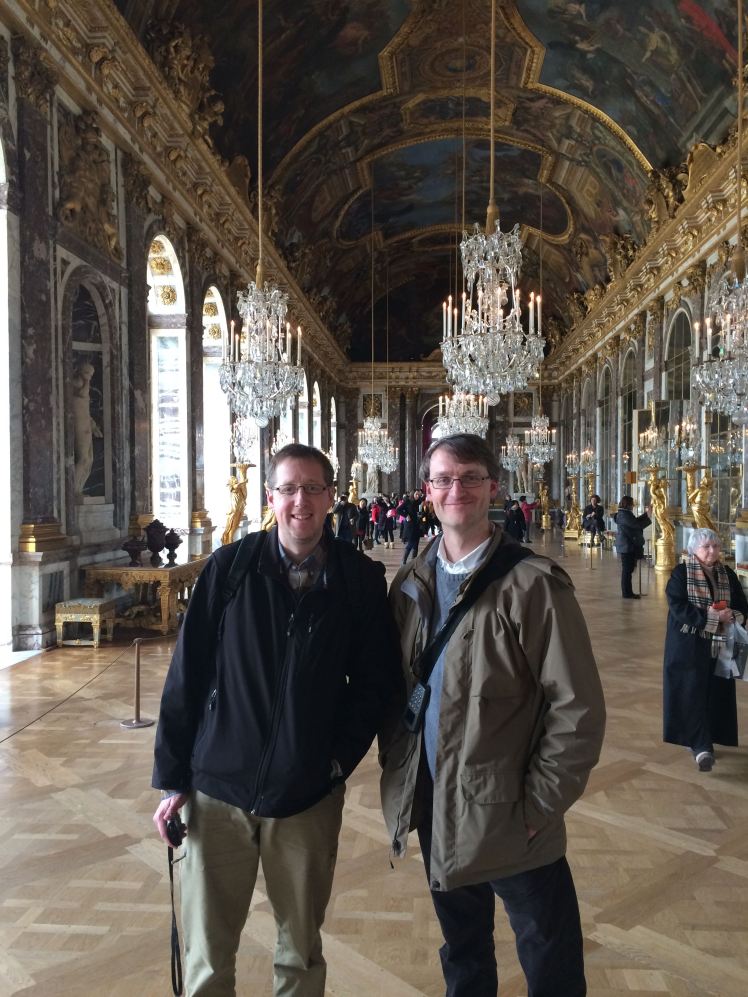I’ve been teaching an online summer course since 2013, when my friend Sam Mulberry and I debuted a new version of a multidisciplinary, gen ed pillar at Bethel called Christianity and Western Culture. (It’s still not my favorite mode of instruction, but we’ve figured out how to make it work — and, as importantly, which students it works well for.) But this summer will be the first in which I’ve also taught an online course both by myself and in a field of specialization: HIS230L World War I, which both meets a general education objective for 20th century history and can fulfill a European history requirement in our major.
WWI is a course I’ve taught many times in Bethel’s three-week January term: first as a 30-35 person on-campus class blending lectures with songs, movies, and group projects; then every other year from 2013 to 2019 as a travel course in Europe, with Sam and me leading groups of 20-24 students everywhere from London and Paris to the Western Front itself.

I’d already tired of the demands of leading J-term travel and handed off that slot in our curriculum to a colleague who developed a terrific course on medieval Islam and Christianity. COVID prevented Charlie from debuting that course in 2021, but if all goes well, he’ll take the Medieval Worlds trip to Morocco, Spain, and France in January 2022.
One way or another, I’m probably done taking students further north in Europe to study the Great War where it was fought. But COVID has also inspired me to think in new ways about combining travel and history education. For example, to help out our kids’ social studies teacher as our school moved online last spring, I curated a list of “virtual field trips” to museums and historic sites around the world.
So I decided to propose my WWI class as a summer option, taught online (asynchronously) as a six-week “virtual travel course.”
It won’t begin until mid-June, so I’ve got some time to fine tune things. But roughly, here’s what I have in mind:
• Twice-weekly recorded lectures (Tuesdays, Wednesdays) to help tell the story of the war, building to end-of-week quizzes or exams (preceded by synchronous review sessions, if we can make schedules align for enough students)
• Three-day weekends during which students will write essays on the literature, films, music, etc. of the war
• Then the middle of the week will be the “travel” component: every Wednesday, students will join me (again, asynchronously) on a virtual tour of a city or battlefield, ending at a museum or other site where they can continue a digital exploration of primary sources on their own, each prompting an entry in a “trip journal.”
For the tours, I’m using a tool Charlie recommended: StoryMap JS. From Northwestern University’s Knight Lab — the makers of a timeline tool I’ve been using with students for several years — StoryMap lets you use either maps or images to “tell stories on the web that highlight the locations of a series of events.” It’s been used by news media to tell more contemporary stories, but it adapts well to more historically distant narratives, like the Midwest Time Machine project from the Newberry Library.
For my class, I’ll create one tour per week: one each for the battles of Ypres and the Somme, plus city tours of London, Paris, Munich, and Minneapolis-St. Paul. (The Minnesota one is entirely new, but the others will simulate walking and driving tours from our J-term travels, often using pictures I took in those locations.) Even apart from the two battlefields, some stops will be dedicated to the story of the war itself, but we’ll also use the city tours to explore the larger social, cultural, intellectual, economic, and political context of the pre-war, wartime, and post-war periods. Plus, we’ll frequently pause to notice how war commemoration becomes a part of these landscapes.
For example, the first half of my two-part tour of London starts at the Tower of London and a neighboring memorial to Britain’s merchant marine, gradually moves west through the City of London to talk about topics like the role of finance and religion in the war, and then concludes at the Museum of London, where I’ll leave students to explore the People’s City gallery and a virtual exhibition on women’s suffrage. (The second half of the tour will open in Trafalgar Square, head down Whitehall, and then south to the Tate Britain, for an introduction to the relationship between art and war.)
It’s still a work in progress, but you can try it out for yourself if you’re interested. (One “in progress” piece: as embedded here, you can’t watch the YouTube clips that I’ve added. So click here to see the full StoryMap.)